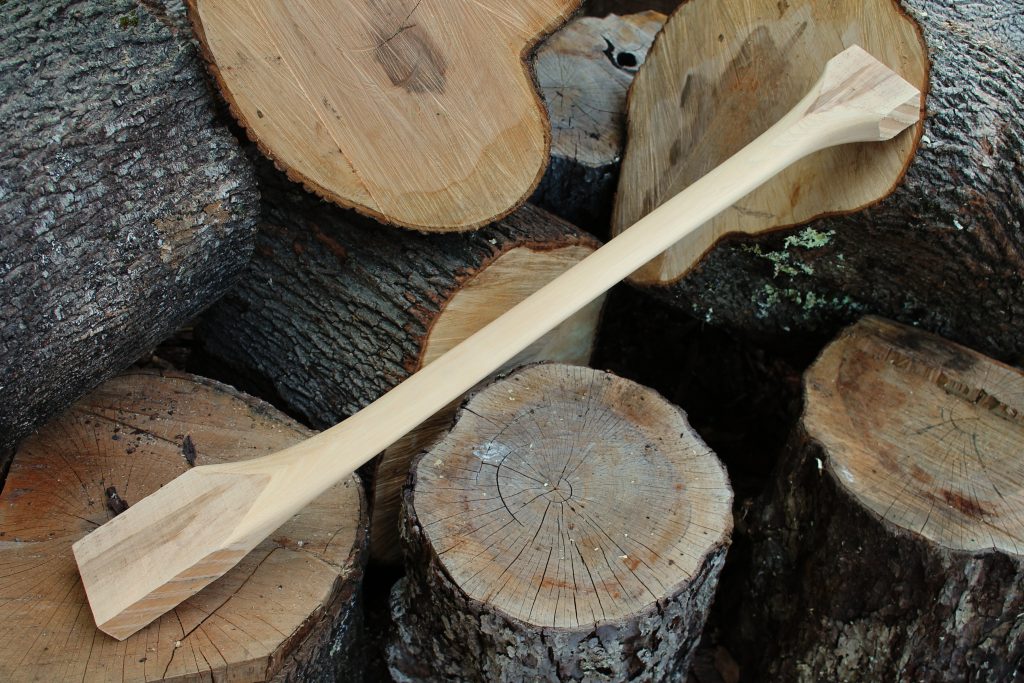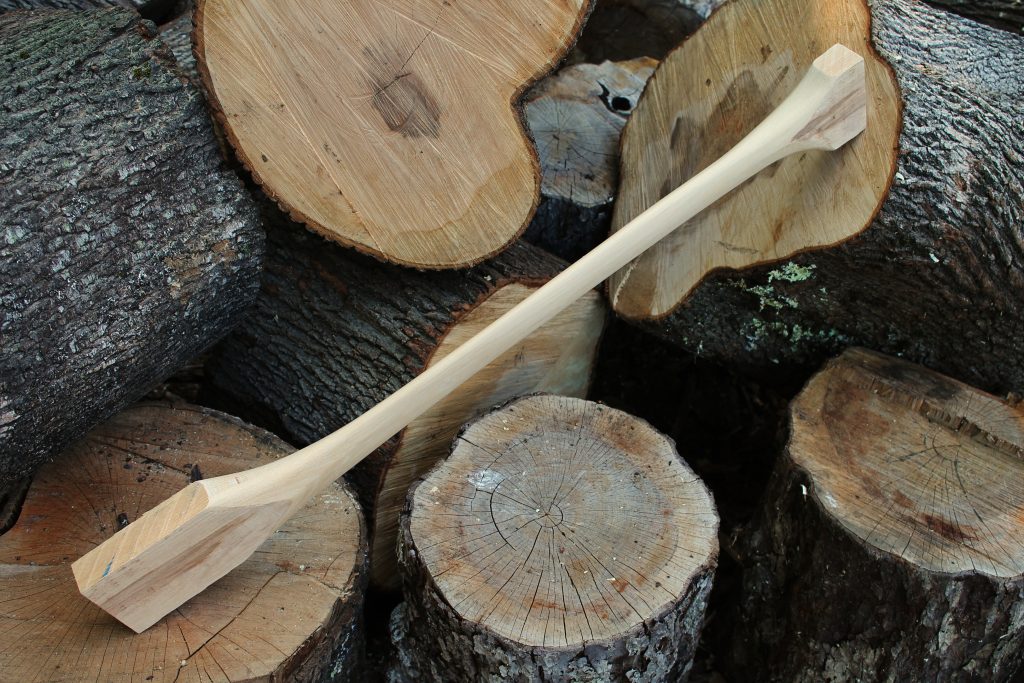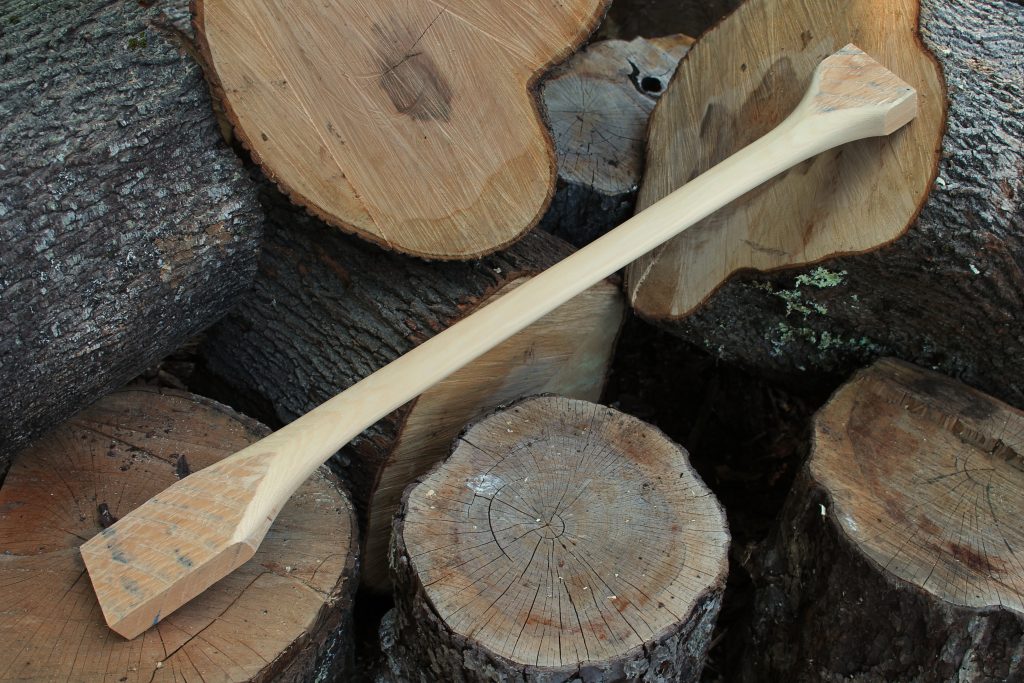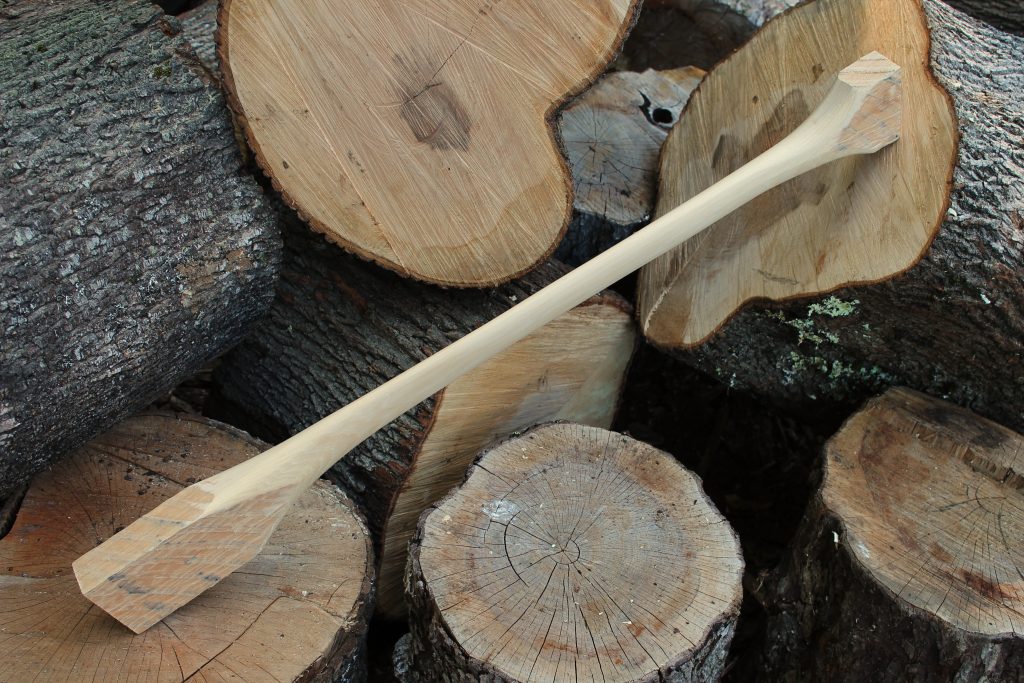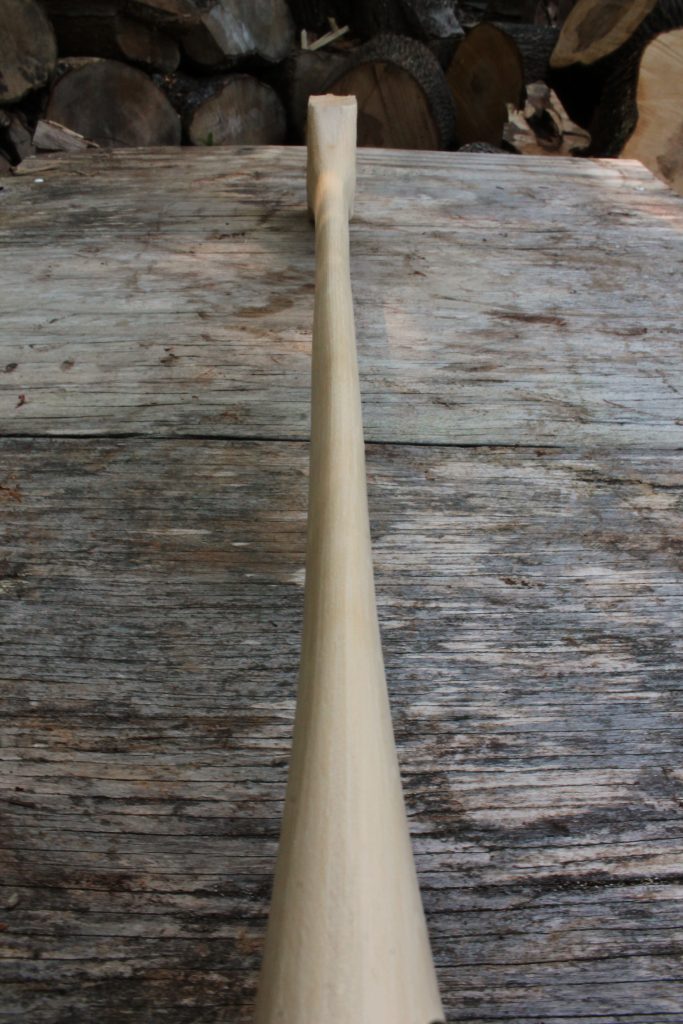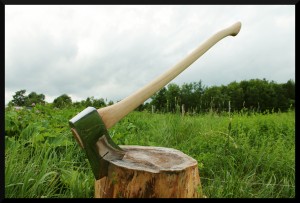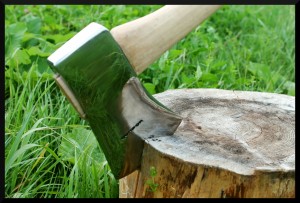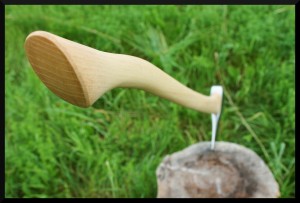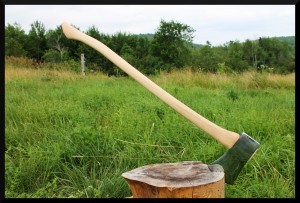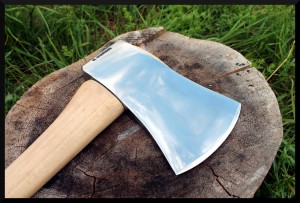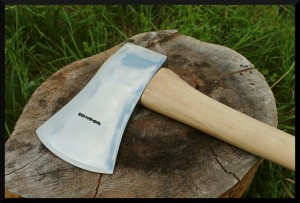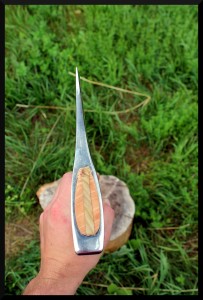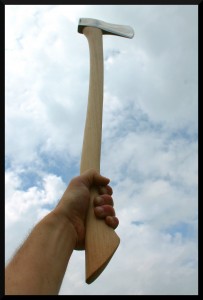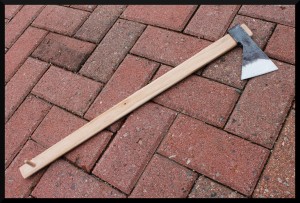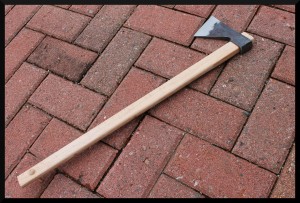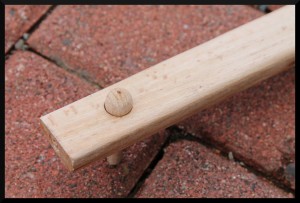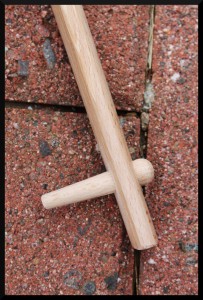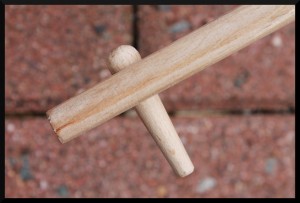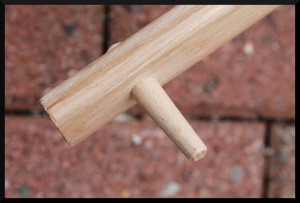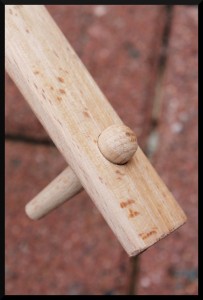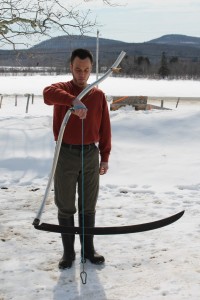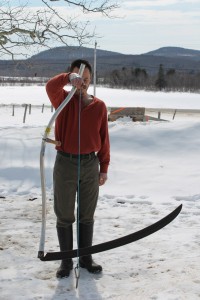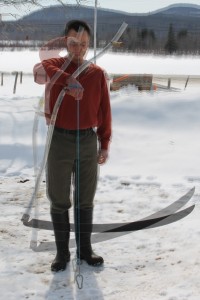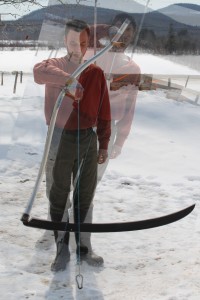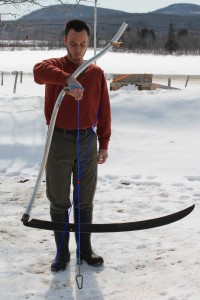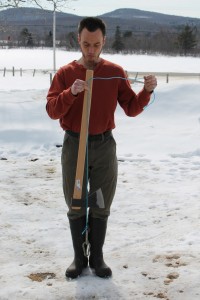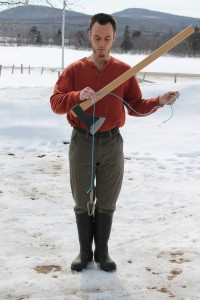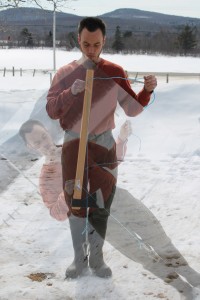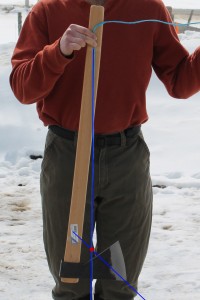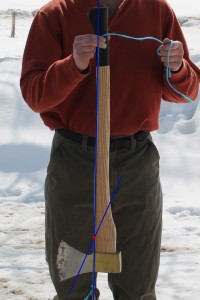This prototype universal-fit axe handle is made from split hickory, for perfect end-to-end grain, measuring 1-7/16″ x 3-5/8″ with an overall length of 34″ and the main length reduced to 1-5/8″ wide x 5/8″ thick, with the tongue and swell left at full stock dimension.
The intent is to leave material for the end user to fine-tune the handle to their particular head, while doing the bulk of the time-intensive thinning work for them. The main length is extra broad to permit the end user to make minor alignment adjustments in the handle orientation in addition to at the tongue, and the flat sides of the knob make laminating additional material easier, if desired. The swell is also left broad so that it may be finished to whatever shape the end user most prefers, and by not cutting a kerf it may be cut as the end user sees fit, or not at all (as is traditional for bush hooks.) The head may be positioned more forward or more rearward on the generous block of the tongue/neck to adjust the balance and orient the bit as desired.
